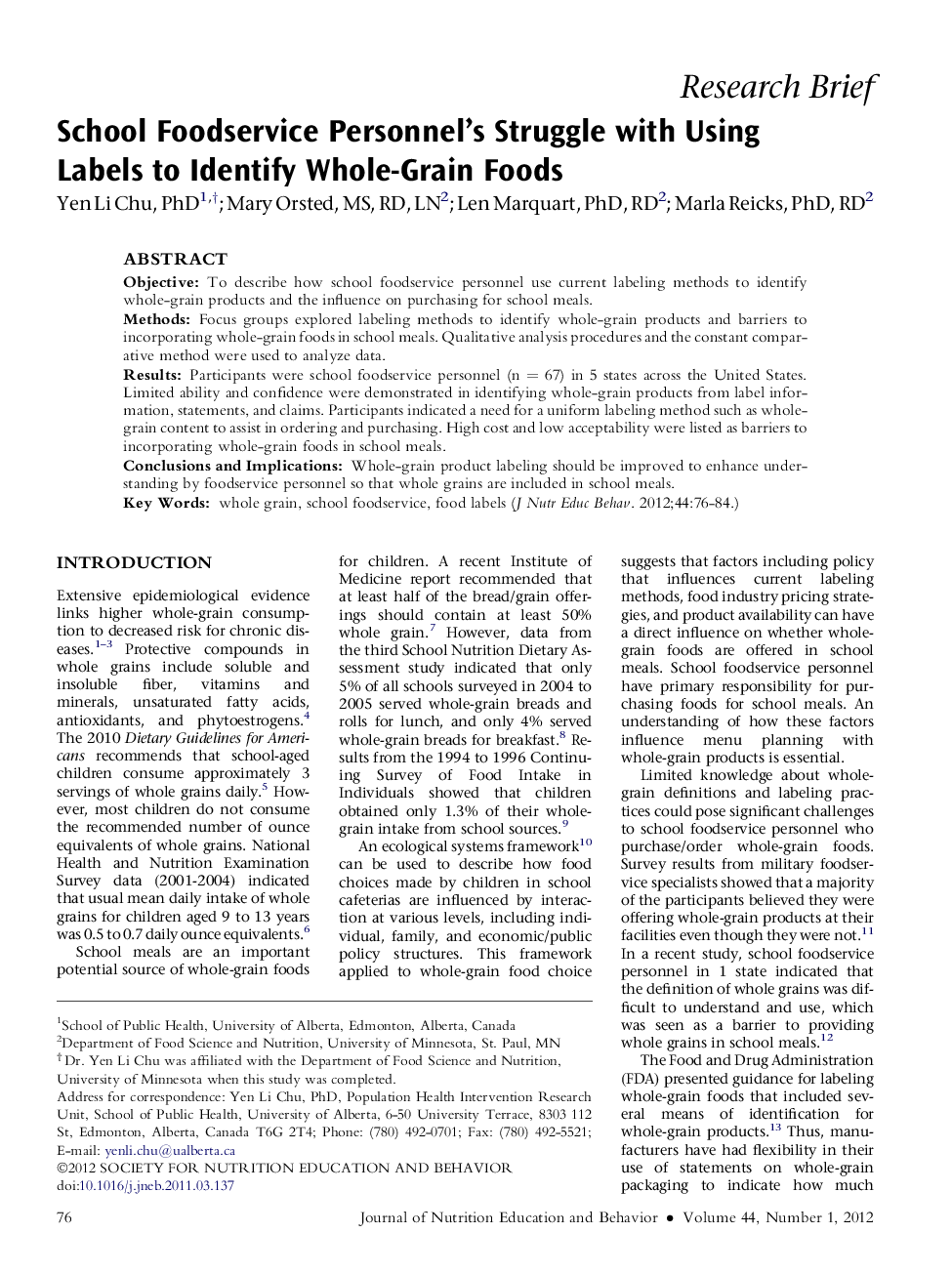| Article ID | Journal | Published Year | Pages | File Type |
|---|---|---|---|---|
| 362430 | Journal of Nutrition Education and Behavior | 2012 | 9 Pages |
ObjectiveTo describe how school foodservice personnel use current labeling methods to identify whole-grain products and the influence on purchasing for school meals.MethodsFocus groups explored labeling methods to identify whole-grain products and barriers to incorporating whole-grain foods in school meals. Qualitative analysis procedures and the constant comparative method were used to analyze data.ResultsParticipants were school foodservice personnel (n = 67) in 5 states across the United States. Limited ability and confidence were demonstrated in identifying whole-grain products from label information, statements, and claims. Participants indicated a need for a uniform labeling method such as whole-grain content to assist in ordering and purchasing. High cost and low acceptability were listed as barriers to incorporating whole-grain foods in school meals.Conclusions and ImplicationsWhole-grain product labeling should be improved to enhance understanding by foodservice personnel so that whole grains are included in school meals.
